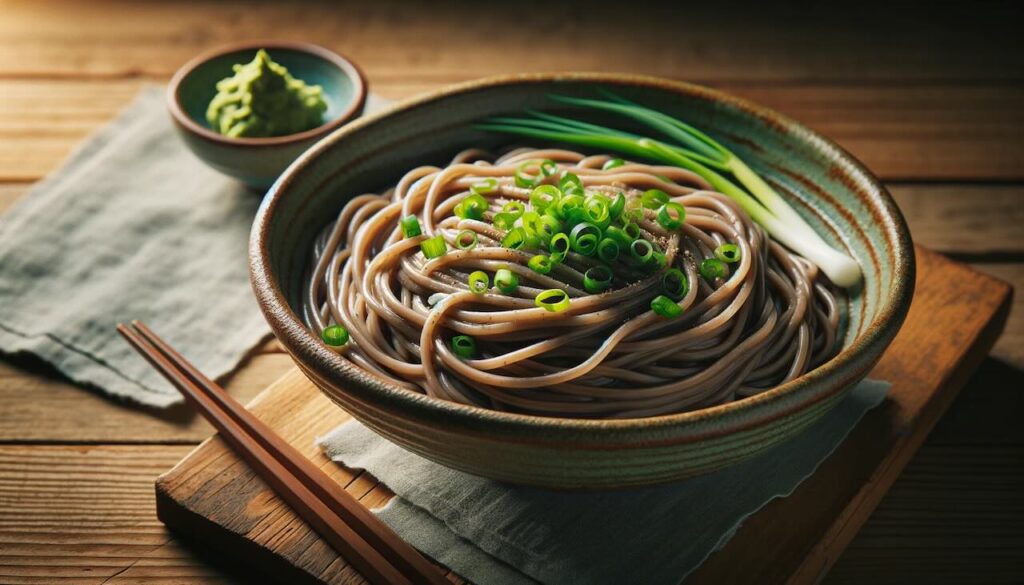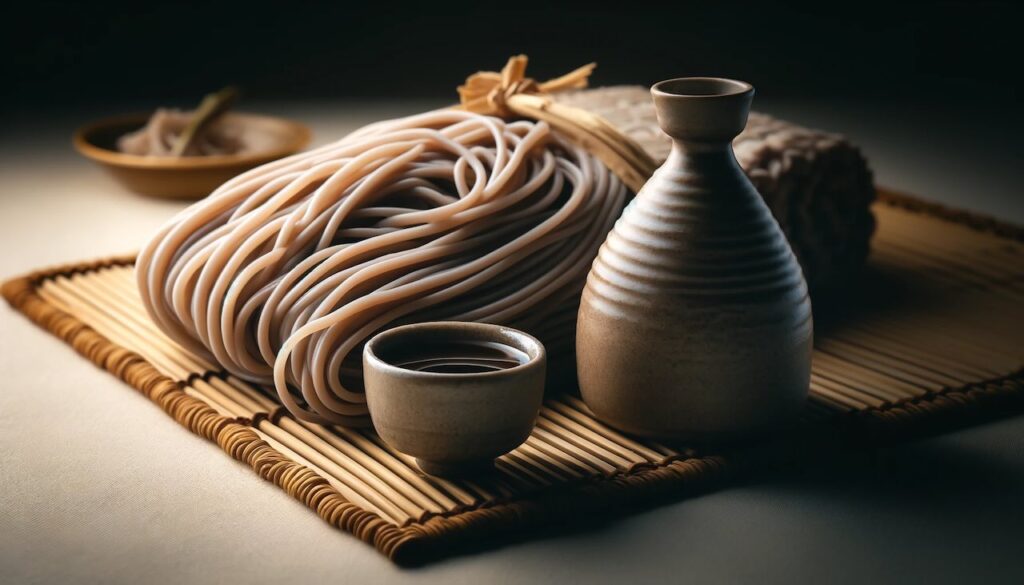When visiting a soba restaurant in Japan, you may encounter two distinctive styles of soba noodles: Juwari Soba and Nihachi Soba. At first glance, they may seem similar, but these two types of soba reflect different approaches to Japan’s long-standing culinary craft, each offering its own unique flavor, texture, and cultural nuance.
In this article, we’ll explore what distinguishes Juwari from Nihachi soba — not just as noodles, but as part of Japan’s deep respect for simplicity, balance, and tradition.
For a broader look into soba’s rich history and cultural role, visit:
👉 The Complete Guide to Soba: Japan’s Ancient Noodle Tradition Explained
The Key Difference: Buckwheat to Wheat Flour Ratio
At the heart of the distinction between Juwari and Nihachi soba lies the ratio of buckwheat to wheat flour.
Juwari Soba (100% Buckwheat Soba):
“Juwari” literally means “ten parts,” referring to noodles made from 100% buckwheat flour without any wheat flour added. This style showcases the pure, unadulterated flavor of buckwheat.
Nihachi Soba (80% Buckwheat, 20% Wheat Soba):
“Nihachi” means “two-eight,” reflecting a blend of 80% buckwheat flour and 20% wheat flour. The addition of wheat makes the dough easier to work with, resulting in slightly different flavor and texture.
This seemingly small difference reflects a centuries-old balance between craftsmanship and ingredient harmony.
Taste and Texture: Pure vs. Balanced
Juwari Soba offers a bold, nutty, and earthy buckwheat flavor that immediately distinguishes it from blended soba varieties. Its texture tends to be softer, smoother, and slightly more fragile, as pure buckwheat lacks gluten to hold the noodles together. The skill required to handcraft perfect Juwari soba is highly respected among soba artisans.
Nihachi Soba, by contrast, delivers a gentler buckwheat flavor balanced by the subtle elasticity and chewiness provided by wheat flour. This texture makes Nihachi soba more forgiving in both preparation and eating, offering a satisfying bite while still preserving much of buckwheat’s signature character.
Both styles reflect Japan’s pursuit of balance — between strength and delicacy, tradition and practicality.
Nutritional Differences: Buckwheat’s Healthful Legacy
Buckwheat, the star ingredient in both soba varieties, has long been valued for its nutritional benefits:
- Juwari Soba (100% buckwheat):
Rich in plant-based protein, dietary fiber, vitamin B1, and rutin — a flavonoid linked to cardiovascular health. Its higher buckwheat content offers maximum nutritional density. - Nihachi Soba (80% buckwheat, 20% wheat):
Slightly lower in fiber and rutin due to the wheat content, but the added gluten provides a firmer texture. For most diners, it still offers excellent nutritional value.
For individuals sensitive to gluten or wheat, Juwari soba is often the preferred choice as it is naturally gluten-free when prepared with pure buckwheat.
Which Should You Choose?
There’s no universal answer — the choice between Juwari and Nihachi soba depends entirely on personal preference.
- If you wish to experience soba in its most authentic, unfiltered form, Juwari soba delivers pure buckwheat richness.
- If you prefer a balanced texture with milder flavors, Nihachi soba offers a more approachable entry point, especially for first-time soba diners.
Japanese soba culture encourages exploration. Many soba shops proudly serve both varieties, inviting diners to appreciate the craftsmanship behind each.
To explore the cultural roots of soba’s drinking traditions as well, visit:
👉 The Surprising Origins of Soba Shops: From Edo Izakaya to Sobagaki as a Sake Snack
A Reflection of Japanese Culinary Philosophy
The contrast between Juwari and Nihachi soba offers more than just a choice of noodles — it reflects Japan’s broader approach to food: respect for ingredients, the pursuit of balance, and mastery of subtlety.
Whether enjoyed hot or cold, with dipping sauce or in broth, both soba styles embody centuries of Japanese tradition, from rustic mountain villages to sophisticated urban soba houses.
Conclusion
Juwari Soba and Nihachi Soba share a common ingredient but present entirely different dining experiences. The next time you encounter both on a menu, consider tasting them side by side — not only to savor their differences, but to glimpse the quiet craftsmanship and cultural heritage that have made soba one of Japan’s most beloved culinary treasures.


